10 days 9 nights
Daily Tour
1 person
English
About this tour
Highlights
- Mesmerizing sceneries of Mt. Annapurna 1 4130m, Annapurna II 7937m, Annapurna III, 7355m, Annapurna IV 7525m, Annapurna South 7219m, Machhapuchre 6999m, Dhaulagiri 8167m, Hiunchuli 6441m and Many Other Ice Peak Mountain
- Lush forests of Rhododendrons and Oaks
- Numerous rivers, suspension bridge and waterfall
- Rich local people Culture and Tradition in Annapurna Basecamp Villages
- Flora and Fauna of Annapurna Conservation Areas
- Natural Hot Spring in Jhinu Danda
- Traditional Sherpa Villages, Culture, Traditions and Hospitality
- Warm-Hearthed People of Annapurna Region
Included/Excluded
- Airport Pick up and Drop by Private Car upon arrival and departure
- Hotel Accomodation (Shared Room for Minimum 2 Pax and Single Room for Private Trip) in Kathmandu & Pokhara as per Itinerary
- All clean Standard Teahouses (Shared Room for Minimum 2 Pax and Single Room for Private Trip) in Chommrong, Himalaya/Daurali, Annapurna Basecamp and Jinu Dhanda as per Package booked
- Deluxe Tourist Bus Ticket from Kathmandu to Pokhara (both ways)
- Jeep from Pokhara to Nayapul & Mutque (both ways)
- Meals 3 x a day as per mentioned in Itinerary
- Company Duffle Bag to lend for trekking
- Sleeping Bag to lend for trekking
- Seasonal Fruits during trekking
- Professional Experienced Licensed English Speaking Guide
- Porter (1 Porter for 2 People with maximum luggage 25 kgs)
- Annapurna Conversation Trekking Permit & Government Tax
- Nepal Visa Online Application Service
- Emergency Evacuation Management / Service by Horse or Helicopter
- Farewell Dinner before Departure
- Official Trekking Certificate from our Company
- Flight ticket to Nepal & Travel Insurance
- Tourist Visa On Arrival Fee --> 15 Days = USD 30, 30 Days = USD 50
- Tips for Guide & Porter
- Extra Accommodation which is caused by your early arrival or late departure other than the trek date, and if you are back to Kathmandu early from the trek due to any problem or rescue (other personal reasons).
- Horse Rent / Helicopter Cost/Expenses for Emergency Evacuation or Personal Request
- Personal Expenses for trekking such as mountain gear or equipments, shopping, wifi/nepal simcard, phone/battery charge, hot water/shower, extra personal meals, drinks (mineral water), snacks, laundry etc
- Other Personal Expenses which are not included in the above facilities.
Itinerary
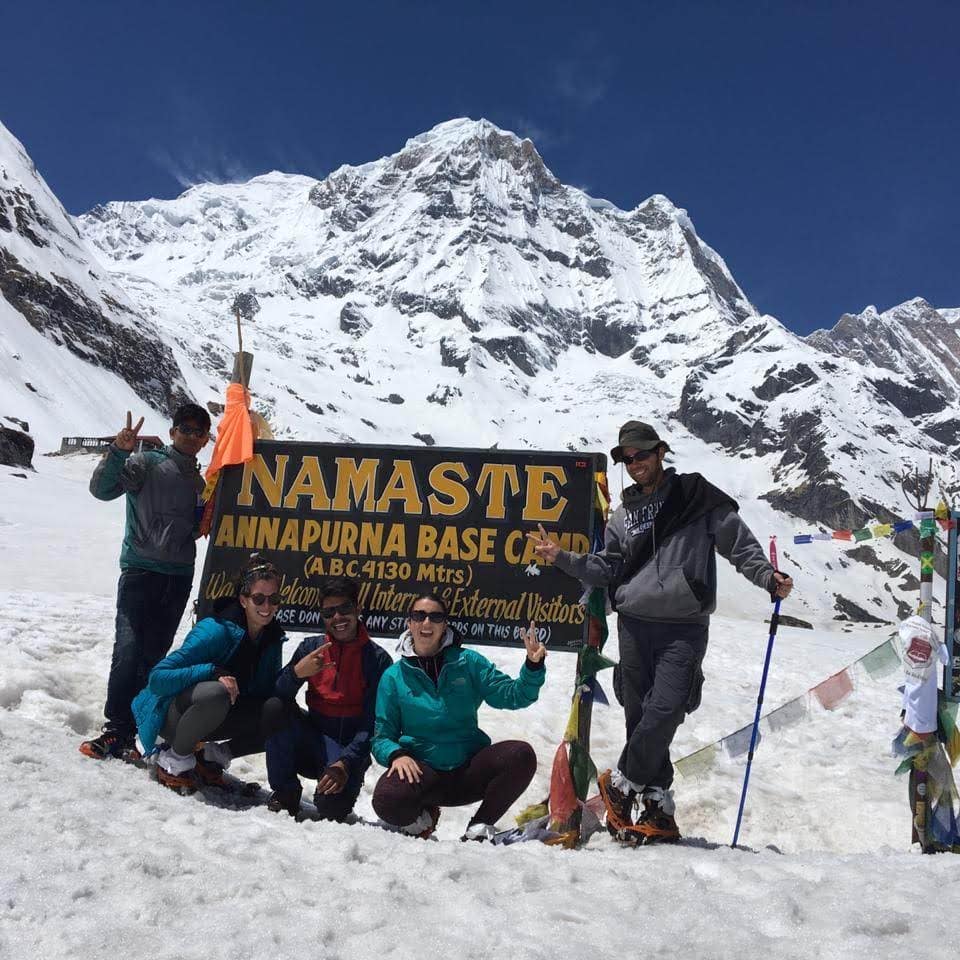
You arrive in Kathmandu today and our company staff will pick you up at Tribhuvan International Airport then drop you at Hotel. Our Staff will also give briefing you about the Annapurna Basecamp Trip and hand over duffle bag for your to pack your stuff for trekking. Payment on the balance trip cost also will be done today. If you come in the morning or early time today, we will have welcome dinner otherwise we will provide you with packed dinner in your room from the hotel you stay. Our Staff will also inform you what time you must wake up & prepared the following morning for driving to Ramechap. Overnight in Kathmandu

You need to wake up around 6 oclock in the morning, having quick breakfast at hotel (packed breakfast) then our Guide will come to hotel to pick you up and drive to Tourist Bus Terminal to leave Pokhara at 07.00 oclook. It takes around 6-7 hrs drive to reach Pokhara. If the road is nice and no traffic, you will reach Pokhara around 4pm and you will directly go to Hotel for rest. Overnight in Pokhara
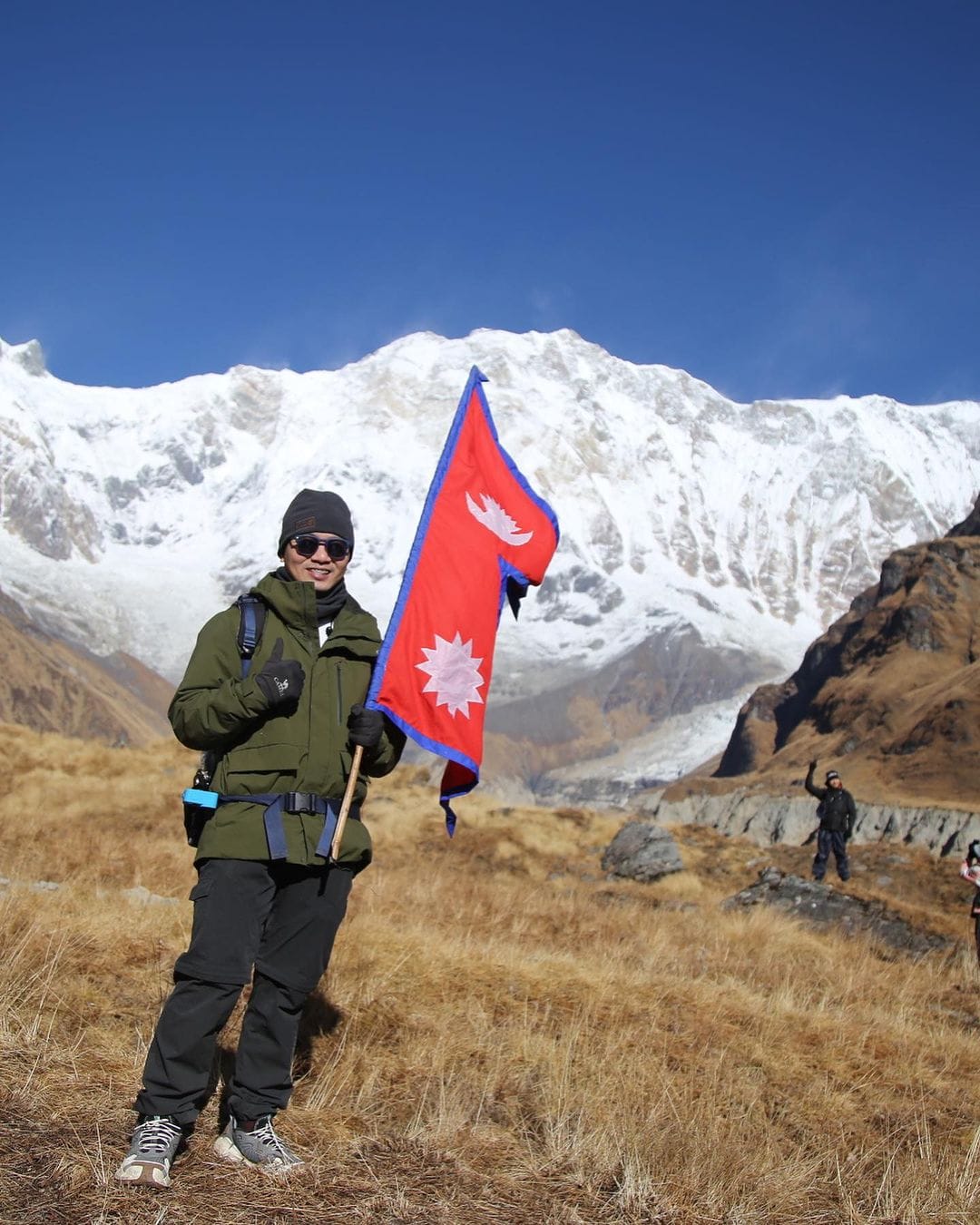
After breakfast in the morning, you will drive to Nayapul for Checkpoint and Permit to Annapurna Conservation Area and continue drive to the starting point of Trek near Matque or Mutque. it takes around 3 hrs to reach here then you will directly start doing trek up and up to Jhinu and Chommrong, During this first trekking day, you will pass through 2 different long suspension bridges with beautiful landscape of village and local people around neighboorhood. Trekking to Matque to Chomrong will take 3-4 hrs. Overnight in Chommrong
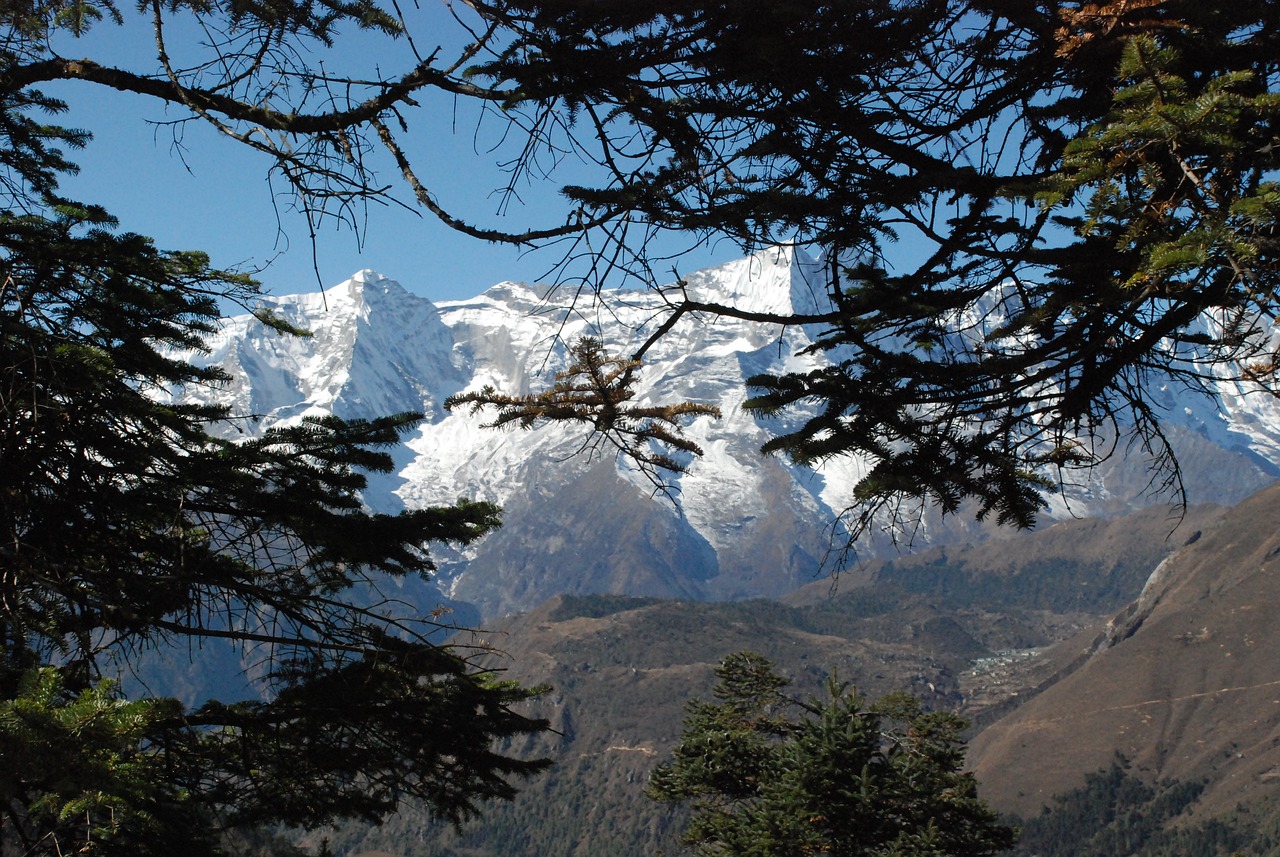
After breakfast you will start your trek at 7.30 from Chomrong to Lower Sinuwa and a steep ascent to Upper Sinuwa, a steep ascent, flat and Descent to Bamboo, Dovan and Deuralli/Himalaya. Treks to Annapurna Basecamp are arranged like stony steps with combination of steep ascending, flat and descending too. it will take around 6-7 hrs to reach Deuralli/Himalaya this day. Today trek will be quite tough and you need to maintain your pace nicely and have strong spirit to go throught all the treks. During the trek, you will see so many beautiful view of endemic plants, waterwalls, animals, villages and South Annapurna Mountain and Fish Tail. Overnight in Himalaya/Daurali
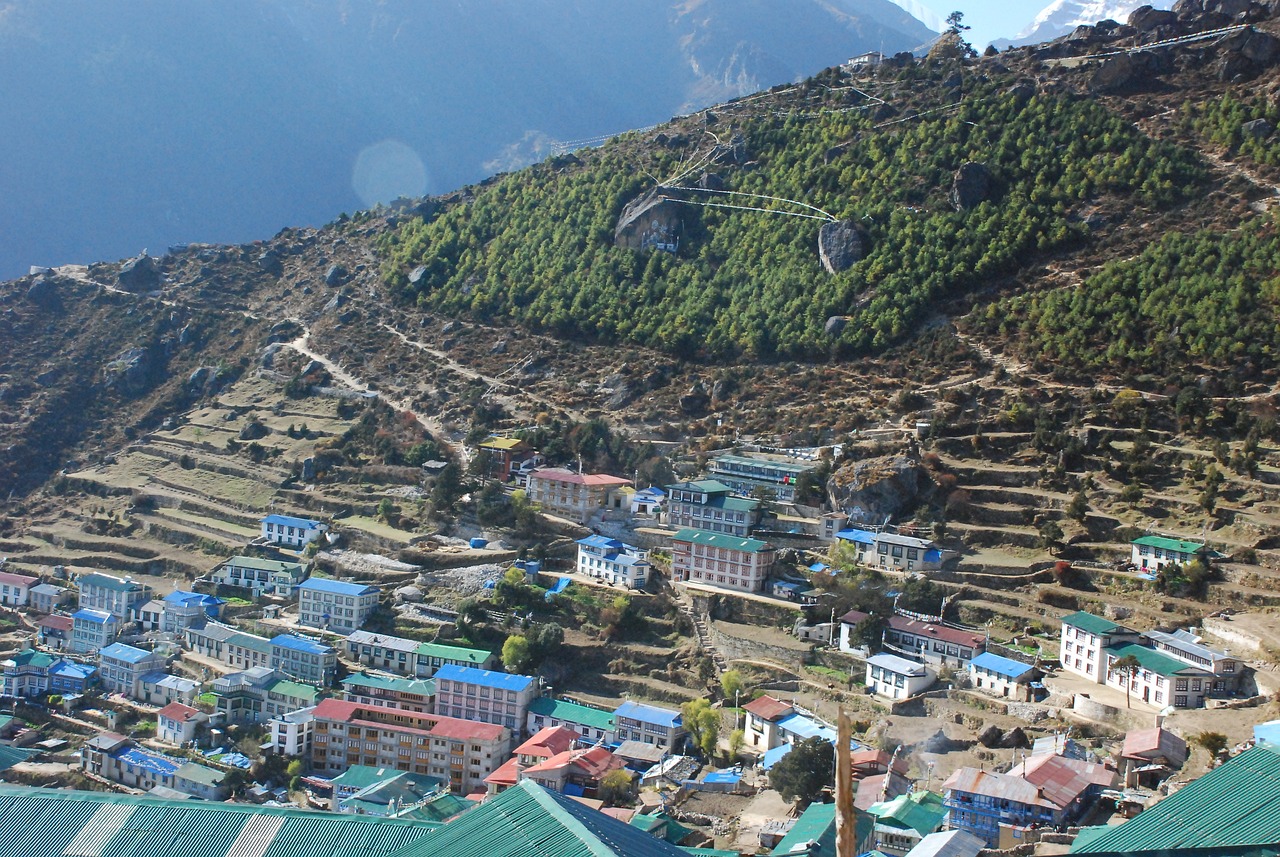
Trail ascends gradually and takes 5 to 6 hours to reach Annapurna base camp by foot. The trek you will take is from Deurali to Annapurna Base Camp route which is is one of the most favored by experienced trekkers who are looking for a more challenging and adventurous journey. The elevation of Annapurna base camp is 4130 meters above sea level. Trek pass throw Bagar 3300m and Machhapuchhre base camp 3700m then finally reach Mount Annapurna base camp Nepal. From the Deurali to Annapurna base camp trek distance trekkers can enjoy spectacular views of different peaks like Annapurna South, Machapuchare and Hiunchuli. You will stop for Lunch in MBC before reaching ABC so you can enjoy the Himalayas peaks of Annapurna Himalayan Ranges like Ganga Purna, Annapurna III, Fishtail, Gandharva Chuli, Himchuli, Annapurna South. After reaching ABC you will be in the total bowl of Himalayas, Surrounded by Himalayas peaks. From ABC you see more peaks such as Tent Peak, Singu Chuli, Bhara Shikhar, and Annapurna I, which is the highest peak we can see from our Short ABC Trek. Annapurna Glaciers behind the tea house and Sunset views over Fishtail and the other Himalayas will make the Short ABC Trek more memorable and unforgettable. You are able to see the beautiful golden sunrise in Annapurna Basecamp if the weather is clear. Total Trek from Deuralli to Annapurna Basecamp is about 5-6 hrs. Overnight in Annapurna Basecamp

Today early morning around 5.30 you can walk out from teahouse and enjoy the Golden Sunrise around Annapurna Basecamp. You can see the most Stunning view of Annapurna Mountain, Mt Macchapuchre/Fish tail, Tent Peak, Annapurna South and Annapurna Glacier. Back to Teahouse around 6.30 and after breakfast and checked out from the tea house, you will trek down directly to bamboo. Annapurna Basecamp to Bamboo distance is around 16.7 km. This day will be the long day walk in Annapurna while returning from ABC Trekking. it takes 6-7 hrs to walk down and reach Bamboo. Overnight in Bamboo

It takes 5-6 hrs to reach Jhinu Danda from Bambooo depending on your walkijg speed and fitness level. Path will be indeed quite tiring but once you have reached Jhinu Dana, You will forget all the tiredness while taking pleasure in natural view over there. If you have chance to try Natural Hot Spring in Jhinu Danda it will make you relaxed. Local People say Jhinu Danda “Tatopani” is a naturally hot spring. You can take a bath here. Overnight in Jhinu Danda (B/L/D)

After breakfast you will walk down for 30 minutes to Mutque area to find Jeep which will drive you to Nayapul and direct to Pokhara. Nayapul - Pokhara distance is about 45.5 km which takes around 2 till 3 hours drive. You will reach Pokhara day time and you will still have much time if you are not tired to do self sightsseeing around Hotel you stay or Phewa Lake side near Hotel. Overnight in Pokhara

After breaksfast at hotel our guide will accompany you to check out from hotel and directly go to Tourist Bus Terminal to drive back to Kathmandu. it takes 6-7 hrs to reach Kathmandu if there is no traffic jam. Once reaching kathmandu in the afternoon you will take rest for a while then in the evening we will invite you for farewell dinner and we distritibute Your Certificate of Achievement of having been successful reaching the Annapurna Basecamp. Overnight in Kathmandu
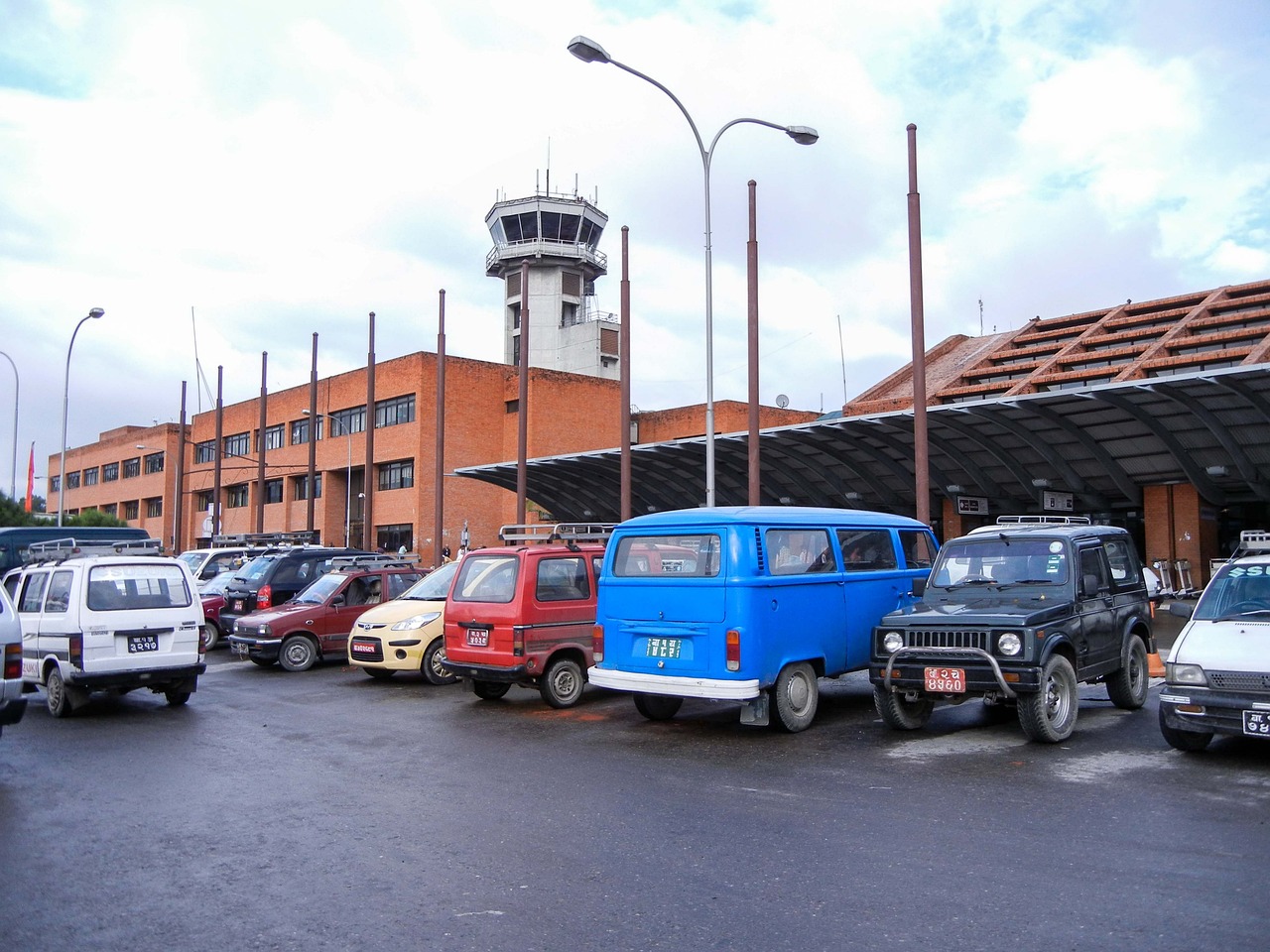
Today is your last your day in Annapurna Basecamp Package. You have free time to rest till check out time comes at 12pm. Our Company Staff will pick you up at hotel and drop you at Tribhuvan International Airport. Trip ends. And Thank you for trust us as your trekking company. See you again in the coming trip
Durations
Languages
Frequently asked questions
The Annapurna Base Camp trek typically spans 10 days and 9 nights. Each day's trekking duration varies, but on average, trekkers can expect to walk for around 5-7 hours per day, covering a distance of approximately 10-15 kilometers. However, the duration may vary depending on factors such as individual fitness levels, weather conditions, and acclimatization needs.
The best time to undertake the Annapurna Base Camp trek is during the spring (March to May) and autumn (September to November) seasons. During these months, the weather is generally stable, with clear skies, mild temperatures, and minimal precipitation, making for ideal trekking conditions. The spring season brings blooming rhododendrons and vibrant vegetation, adding to the scenic beauty of the trek, while autumn offers crisp, clear days with stunning views of the surrounding mountains.
The Annapurna Base Camp trek is considered moderately challenging. It involves both ascending and descending terrain, with varying degrees of steepness. Trekkers should have a good level of physical fitness and stamina to tackle the long hours of walking and altitude changes. However, the trek does not require any technical climbing skills, making it accessible to most trekkers with proper preparation and training.
Trekkers undertaking the Annapurna Base Camp trek need to obtain several permits. These include a TIMS (Trekkers' Information Management System) card and a permit for the Annapurna Conservation Area Project (ACAP). These permits regulate access to the trekking routes, ensure environmental conservation, and contribute to local development initiatives. It is essential for trekkers to obtain these permits in advance and adhere to the rules and regulations set forth by the authorities.
Annapurna Base Camp is situated at an altitude of 4,130 meters (13,550 feet) above sea level. Proper acclimatization is crucial to prevent altitude sickness, which can occur due to the decreased oxygen levels at higher elevations. Trekkers should ascend gradually, take regular breaks, stay hydrated, and spend an extra day for acclimatization at higher elevations, such as Annapurna Base Camp, to reduce the risk of altitude-related complications.
Accommodation along the Annapurna Base Camp trek primarily consists of teahouses or lodges located in villages along the route. These teahouses offer basic yet comfortable lodging options, including dormitory-style rooms or private rooms with shared bathrooms. The facilities may vary from one teahouse to another, but typically include a dining area where trekkers can enjoy meals and socialize with fellow travelers.
Safety is paramount while trekking in the Himalayas, including the Annapurna Base Camp trek. Trekkers should trek with a knowledgeable guide who is familiar with the terrain and can provide assistance in case of emergencies. It's also essential to carry essential items such as a first aid kit, water purification tablets, sunscreen, sunglasses, and a map or GPS device. Trekkers should ensure proper acclimatization by ascending gradually, staying hydrated, and listening to their bodies.
Trekkers should pack clothing suitable for a range of temperatures and weather conditions, sturdy hiking boots, a sleeping bag rated for cold temperatures, a backpack, trekking poles, a first aid kit, sunscreen, sunglasses, a hat, gloves, and personal items such as toiletries and medications. Additionally, it's important to pack light but efficiently, considering the changing weather conditions and rugged terrain encountered during the trek.

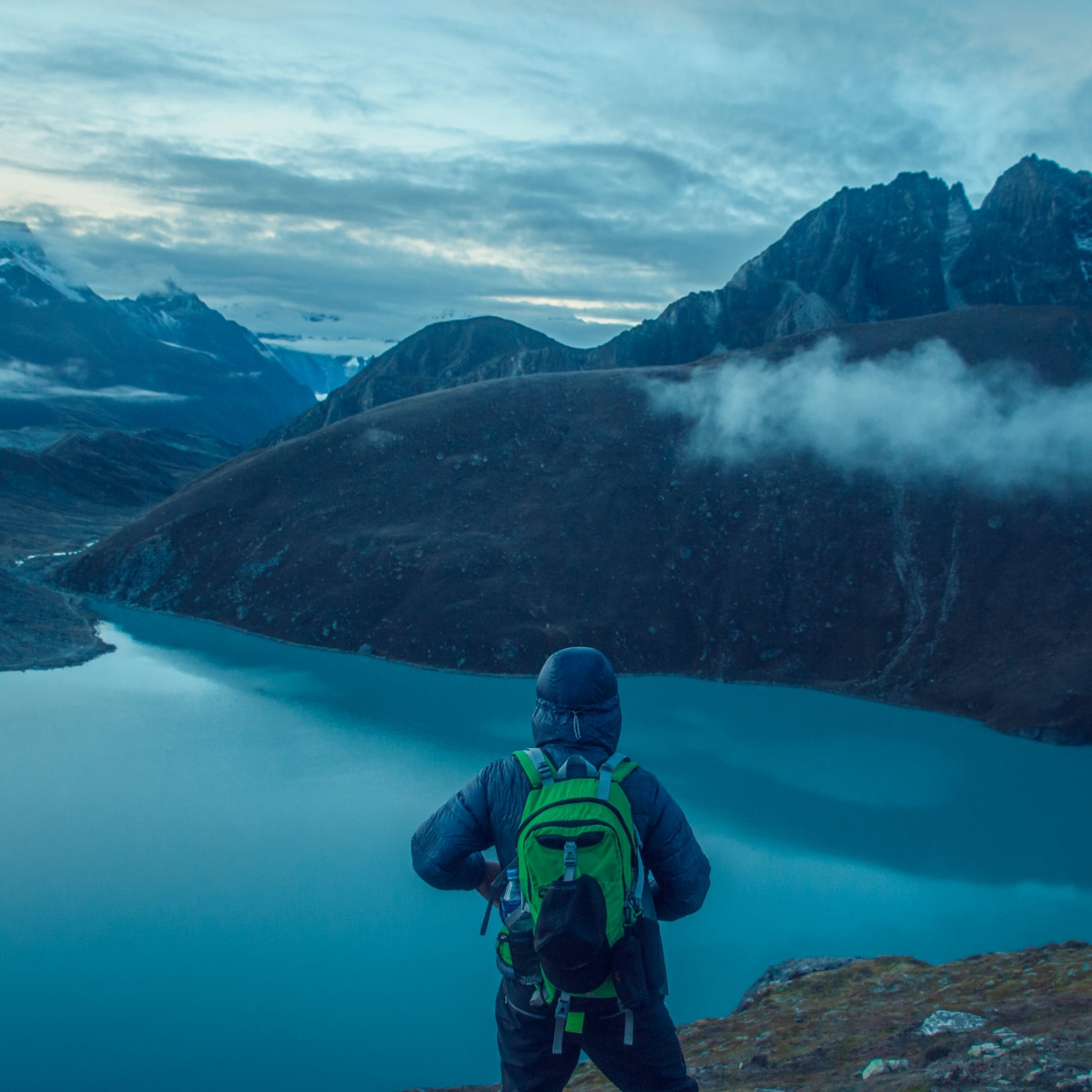
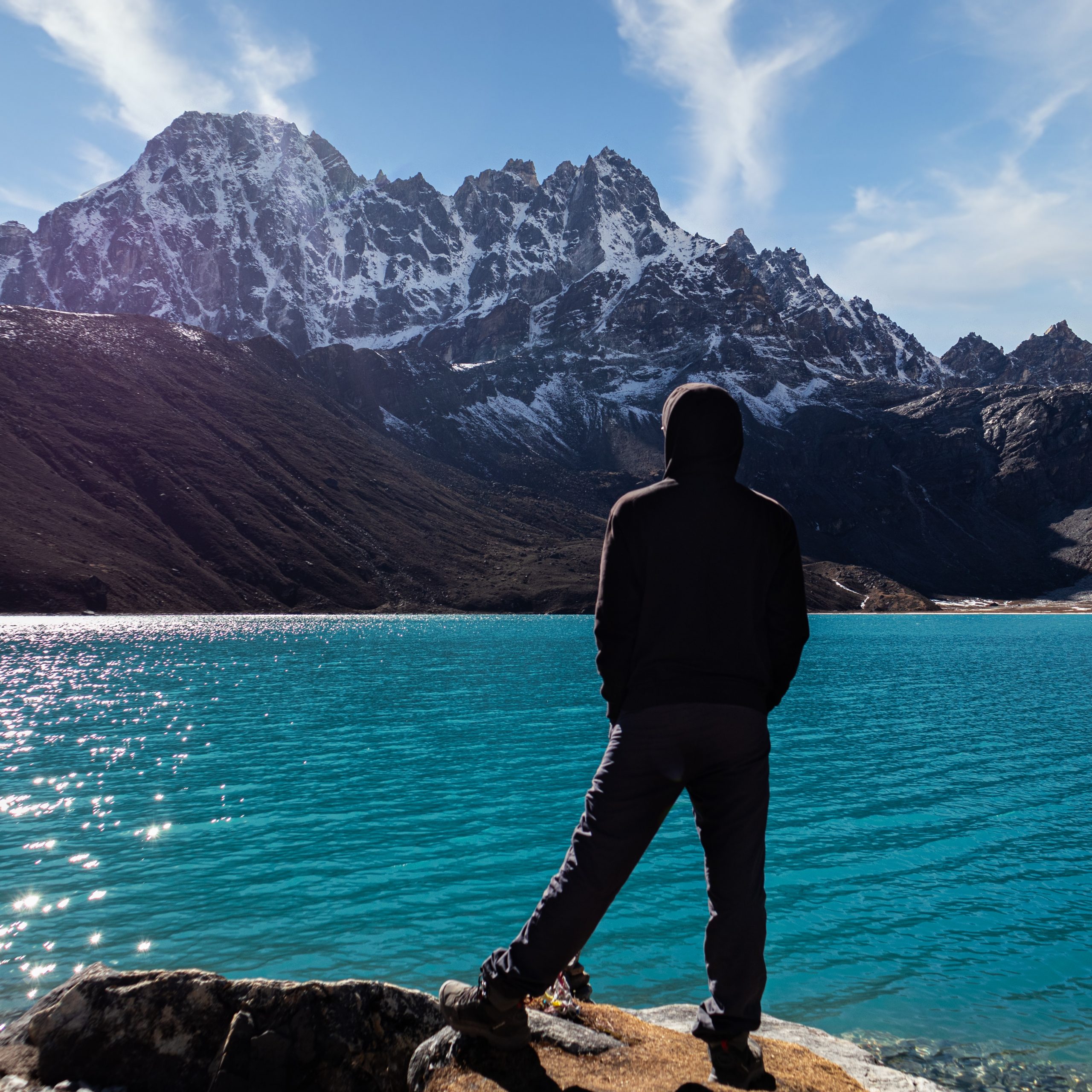
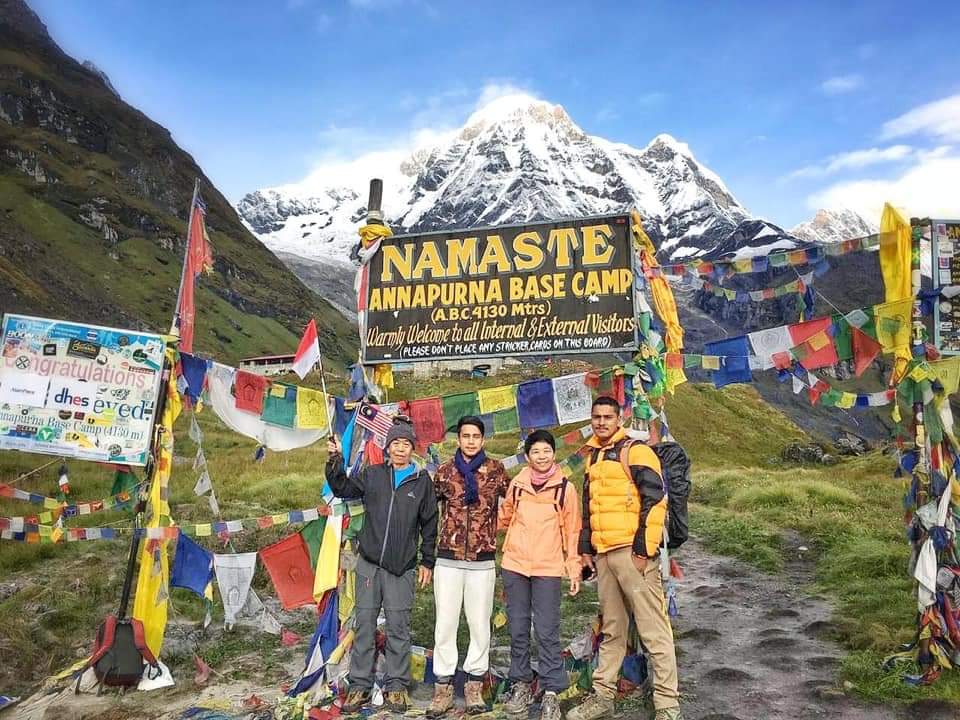

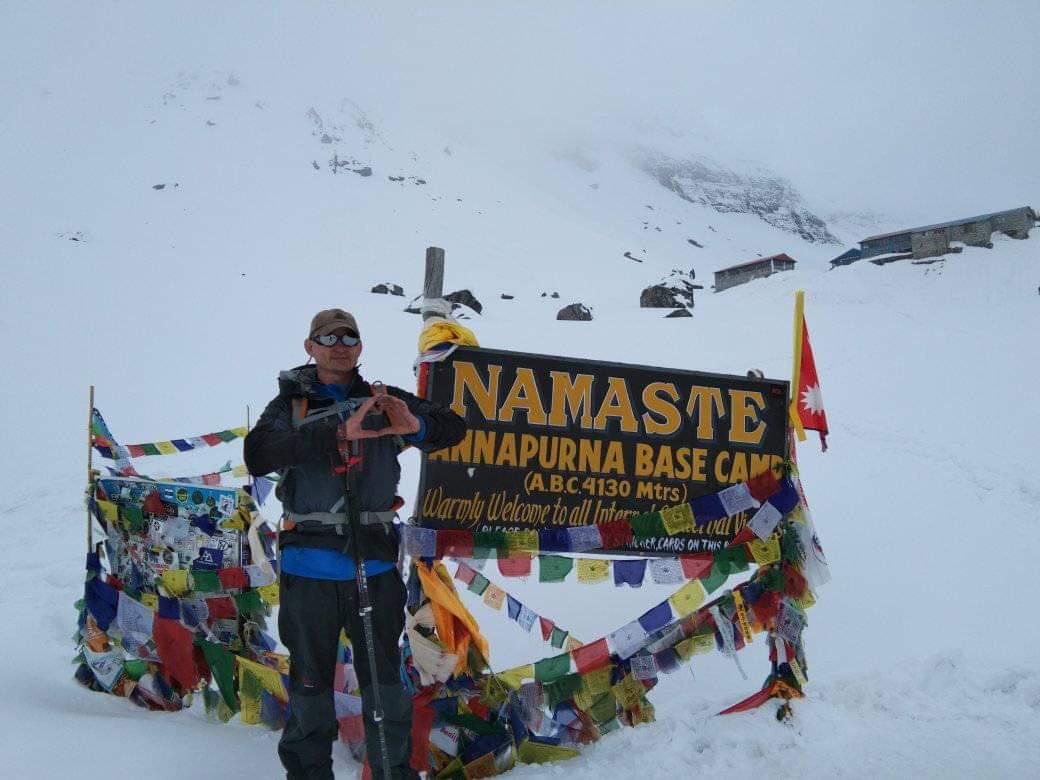
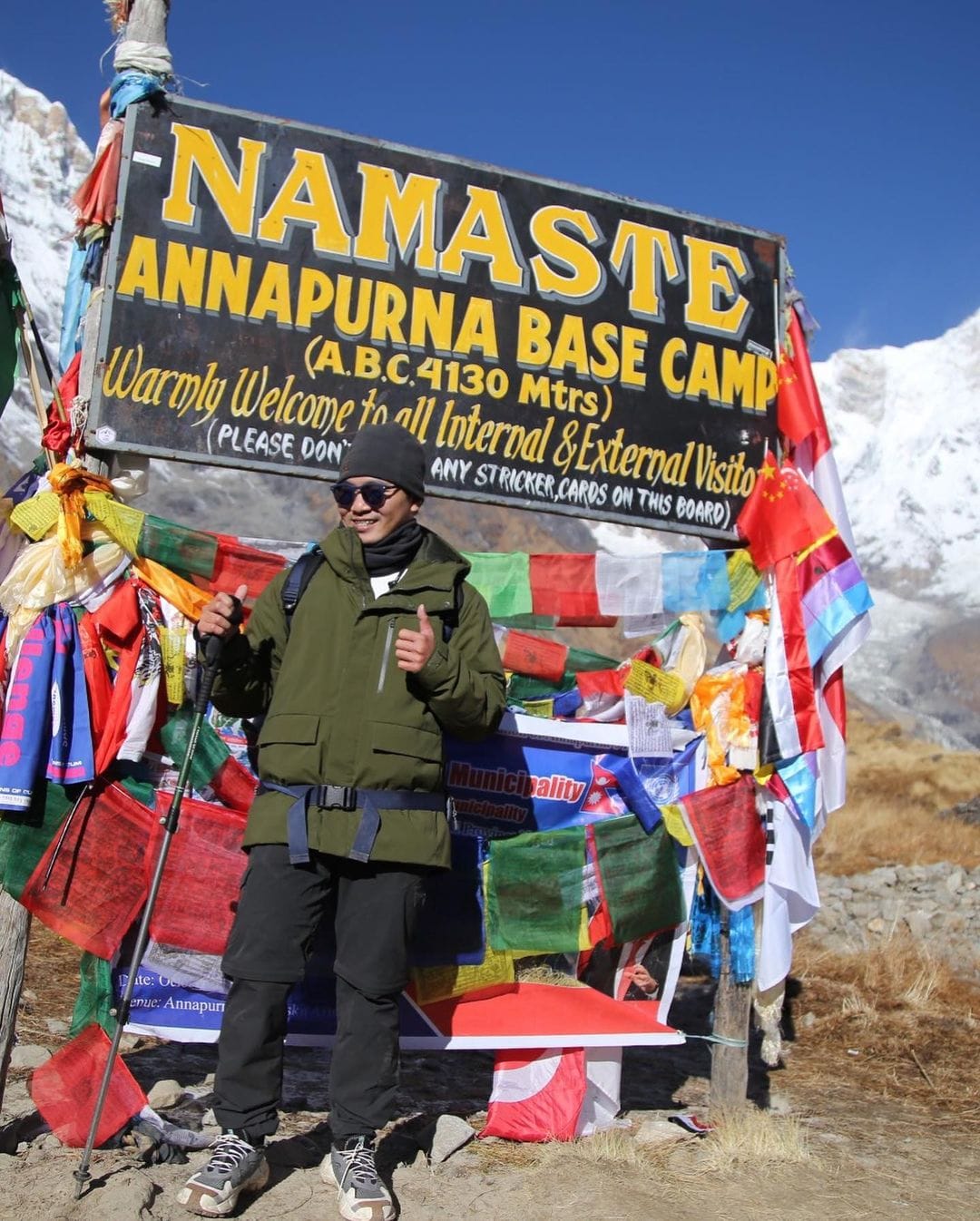
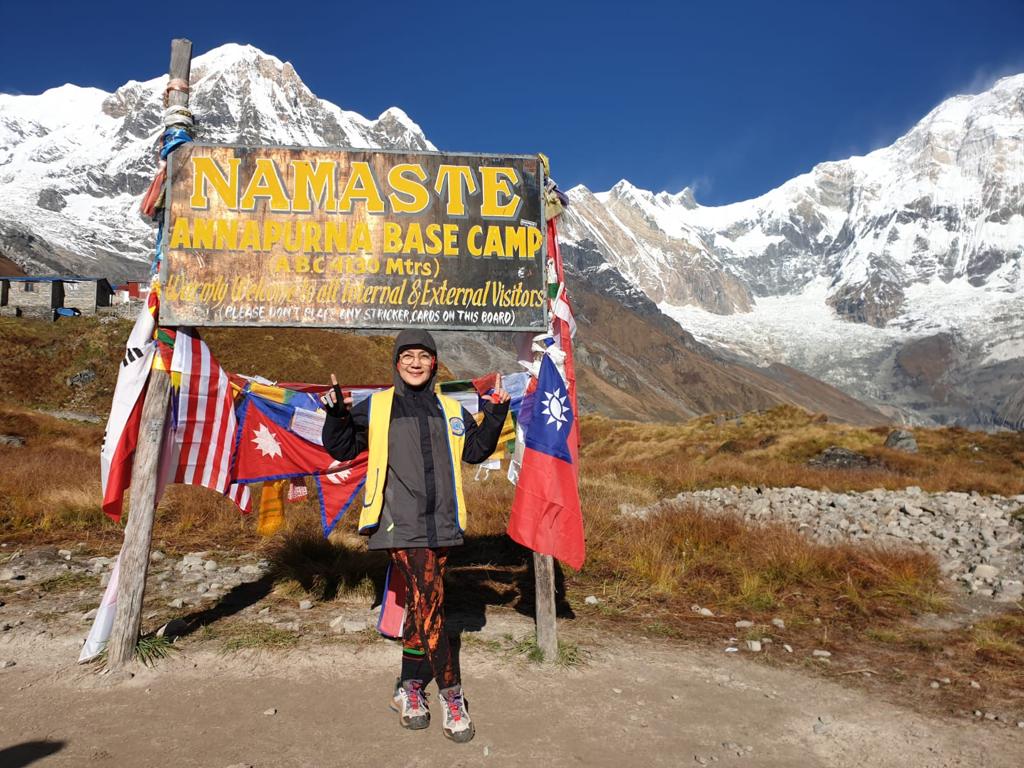
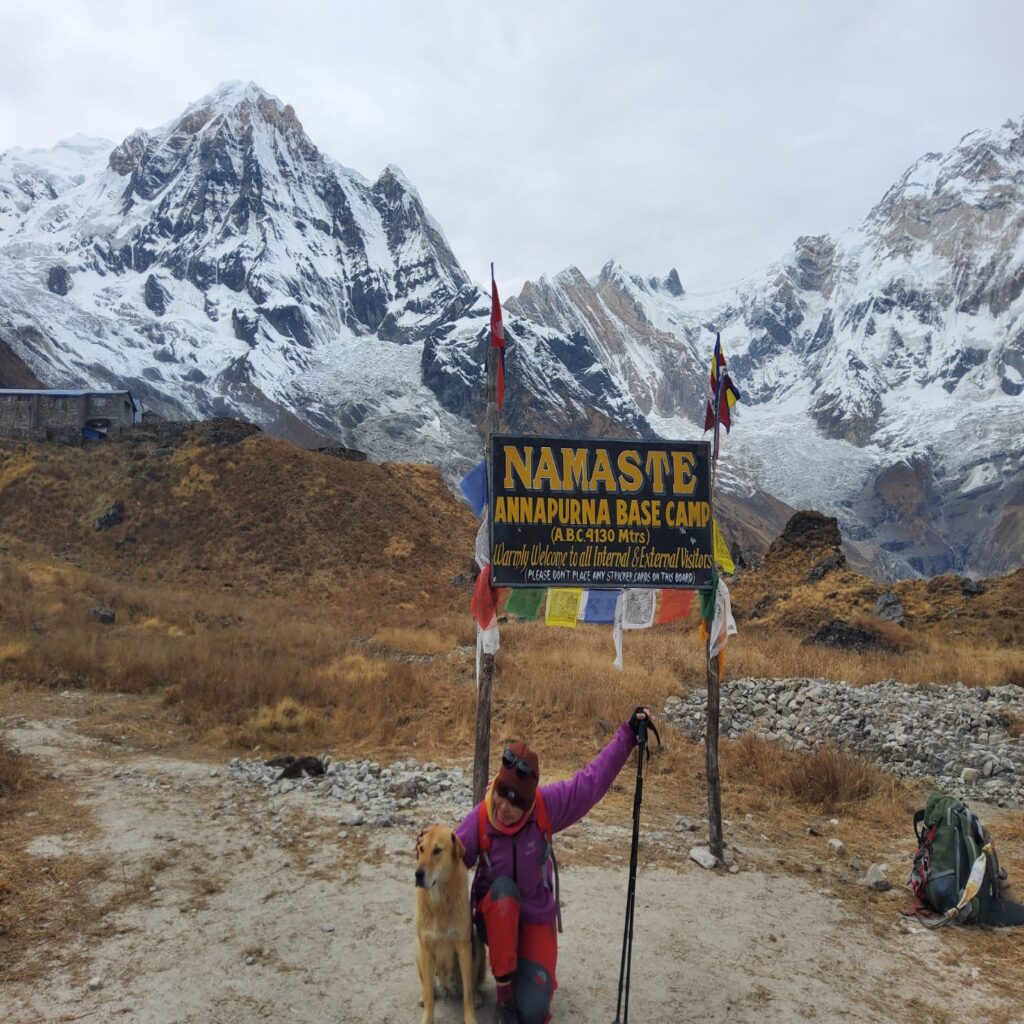
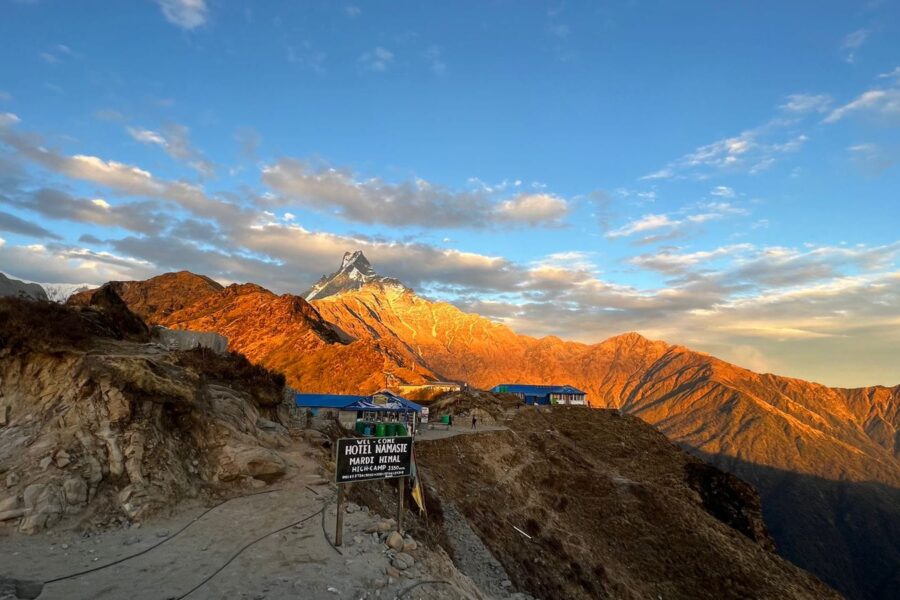
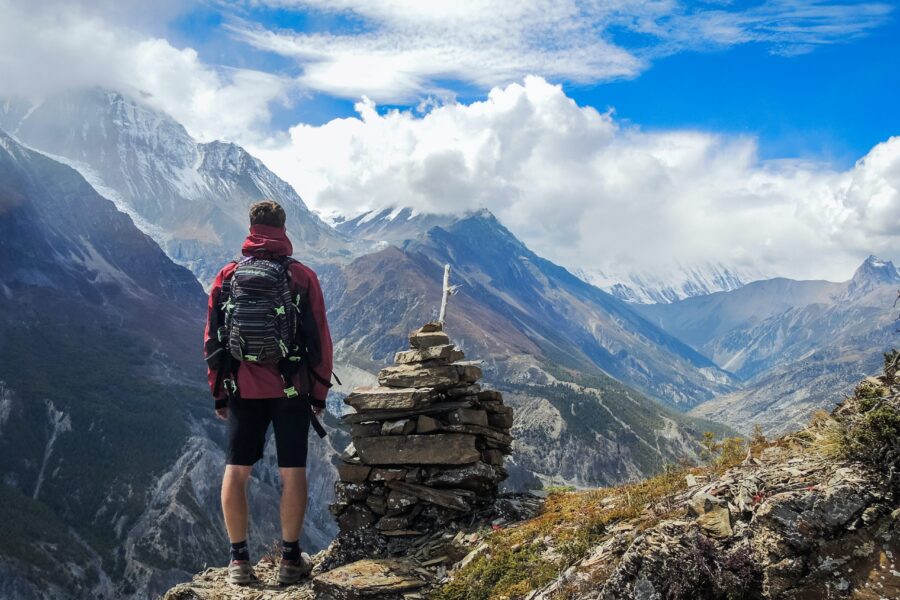
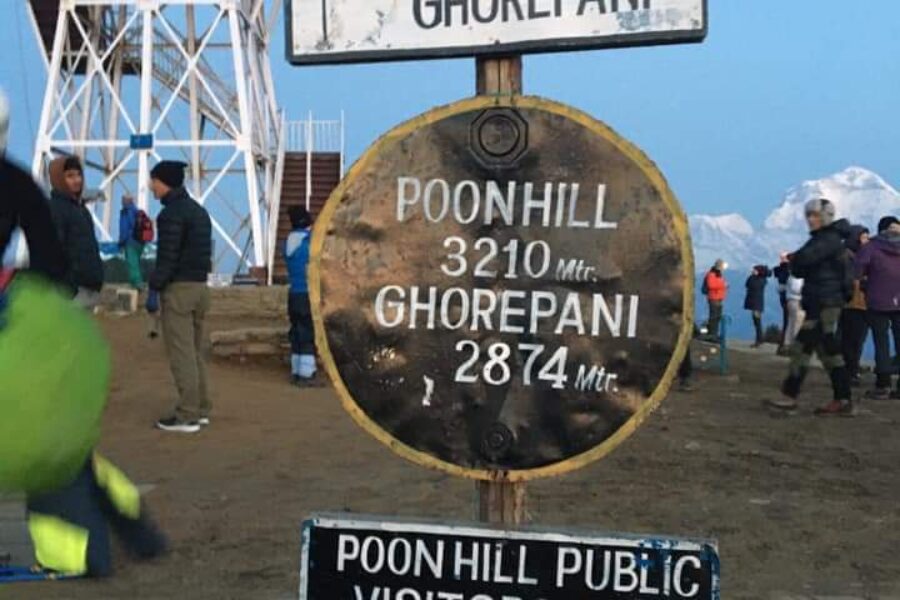
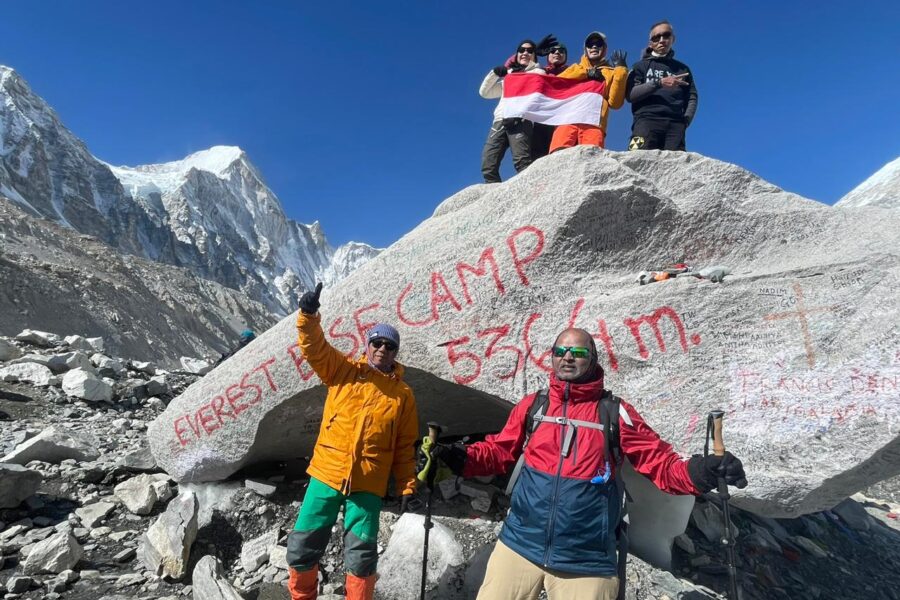
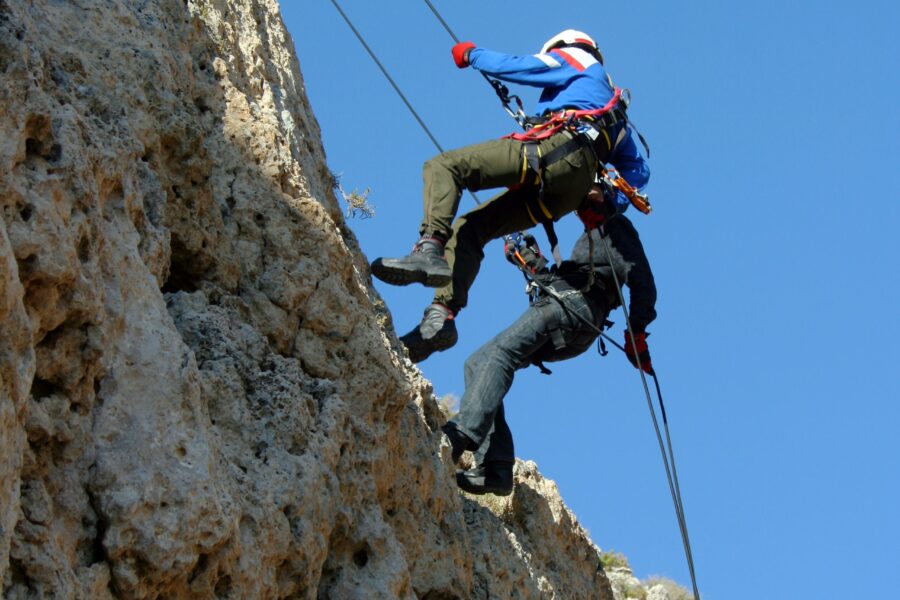
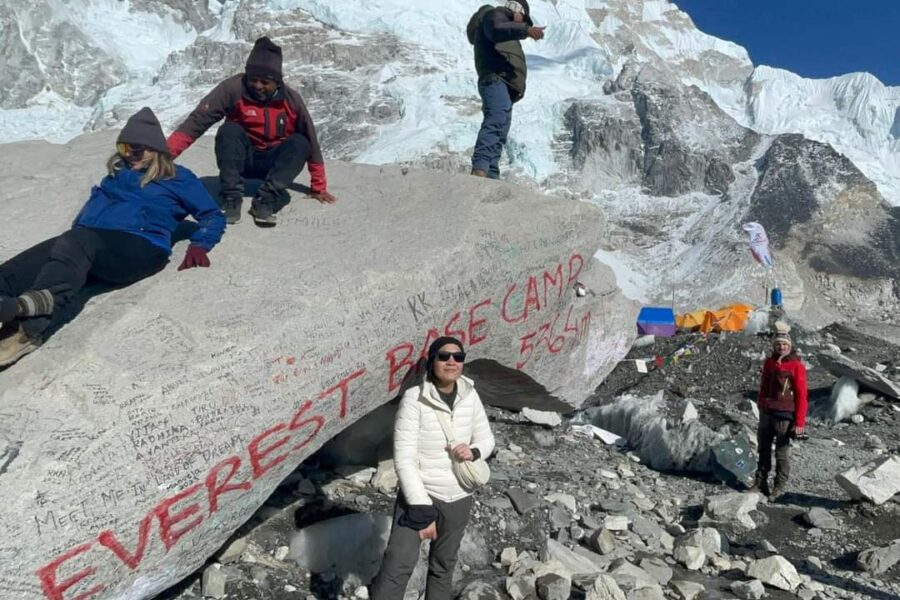
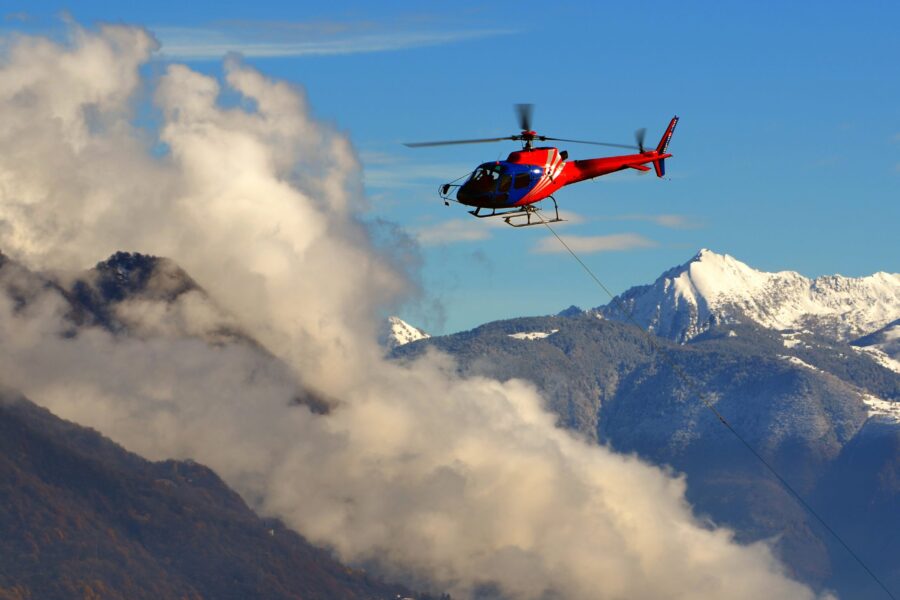

Leave a review